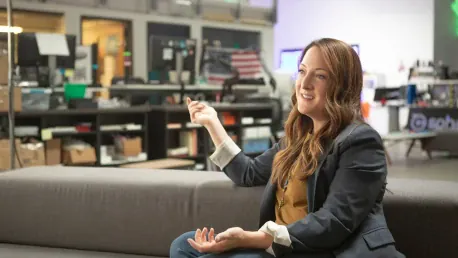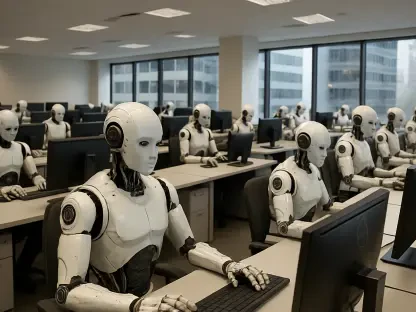With a significant transformation on the horizon, the University of Rochester is gearing up for the launch of the myURHR system on December 16. This monumental shift marks one of the most extensive system transitions in the University’s history, impacting every faculty and staff member. The myURHR system promises streamlined processes and improved functionality, making it essential for employees at every level to familiarize themselves with the new platform. To ensure a smooth transition, the University has rolled out a comprehensive training program designed to equip everyone with the necessary skills and knowledge. The emphasis on this transformation is not just about changing software but enhancing the overall efficiency and productivity of the institution’s human resource operations.
Both administration and staff have high hopes for myURHR, which is expected to revolutionize HR management by offering improved user experiences and reducing administrative burdens. Given the broad impact, the University has dedicated substantial resources to ensure that the transition is meticulously planned. The stakeholders believe that the modernization will not only optimize human resource functions but also contribute to the wider objective of fostering a more collaborative and supportive work environment. The decision to implement myURHR was driven by the need for a more integrated system capable of handling the complex needs of a modern educational institution.
Extensive Training for a Smooth Transition
As the countdown to December 16 nears, preparation is in full swing with a structured training regimen that aims to familiarize employees with the ins and outs of myURHR. The training program includes learning new terminology, system navigation skills, and understanding new processes and functionality. Several key training modules are scheduled to be available by the end of October. These include “Managing Employee Compensation in Workday,” “Graduate Student Appointments in Workday,” “Manager’s Responsibilities in Workday,” and “Managing Timecards: Timekeeping for Managers in UKG.” For managers, coordinators, and timekeepers, completing these modules is critical to ensure they are well-prepared for the transition.
The focus on preparedness cannot be overstated, as the myURHR system will affect every aspect of HR operations. By investing time in training now, the University aims to mitigate potential challenges when the system goes live, fostering a seamless switch-over. The knowledge gained from these training sessions is also expected to yield long-term benefits by creating a more informed and capable workforce. Training modules are designed to be interactive and user-friendly, ensuring that employees can easily grasp the new system’s intricacies without overwhelming themselves. The University also offers supporting materials, including video tutorials, FAQs, and live assistance to make the learning curve as manageable as possible.
The importance placed on training underscores a proactive approach to addressing any issues before they arise. Stakeholders recognize that the more thoroughly employees are trained, the more efficient and productive the launch will be. This advance preparation aims not only to meet immediate operational needs but also to sustain the long-term efficacy of HR functions. Administrators have also scheduled follow-up sessions post-launch to address any emerging concerns and to provide additional support. This comprehensive approach is intended to ensure that the transition to myURHR is as smooth as possible, minimizing disruptions and maximizing operational efficiency.
Celebrating Successes with UR Stars
Amid the flurry of preparations, the University underscores the importance of recognizing and celebrating workplace successes. The newly launched UR Stars platform is an initiative designed to acknowledge and appreciate employees’ contributions. UR Stars is an integrated recognition system allowing faculty and staff to celebrate milestones and everyday achievements. It aligns with the University’s commitment to promoting belonging, equity, diversity, and inclusivity. This platform is user-friendly, ensuring that recognition is easily accessible and can be widely shared across the University community.
The UR Stars platform embodies the University’s values and encourages a culture of appreciation and positive reinforcement. In an environment undergoing significant change, recognizing individual and team contributions is crucial for maintaining morale and fostering a supportive community. The platform facilitates real-time recognition, enabling immediate acknowledgment of outstanding efforts. Leaders believe that this initiative will serve to enhance employee engagement and satisfaction by making individuals feel valued and appreciated. This timely recognition also serves as motivation for continued excellence, particularly during a period of transformation.
The University aims to make the UR Stars platform a fundamental part of its culture. By embedding recognition into day-to-day operations, the institution hopes to create an environment where employees feel consistently supported and celebrated. The task of maintaining high morale during a period of change is critical, and UR Stars provides an effective tool for achieving that. Additionally, the platform offers analytics and insights, allowing administrators to track and understand patterns of recognition and to identify areas where additional support may be beneficial. This data-driven approach aims to ensure that every employee’s hard work is acknowledged, thus fostering a culture of continuous appreciation and support.
Important Deadlines and Policy Updates
In addition to the HR modernization efforts, the University’s October newsletter provides essential reminders about upcoming deadlines and policy updates. Notably, the Open Enrollment period for University benefits for 2025 is set to close on October 30, 2024. Employees are encouraged to review the benefits highlights and attend webinars and Q&A sessions to make informed decisions about their enrollment. The process is outlined in detail on the Open Enrollment page, ensuring transparency and accessibility for all staff. Open Enrollment is a critical period for employees to review and make changes to their benefits packages, and the University strives to provide all necessary resources to facilitate this.
Daylight saving time ends on November 3 at 2:00 a.m., necessitating a one-hour setback of clocks. For hourly-paid staff working during the time change, this means an additional hour of work. Supervisors are responsible for communicating this change, although the time clocks in HRMS and Kronos will automatically update. Policy updates such as these, although seemingly minor, are imperative for maintaining operational efficiency and ensuring compliance with labor laws. The clear communication of these updates helps in preventing any confusion and ensures that every employee is adequately informed about changes that might affect their work schedules or pay.
Voting time off is another crucial policy highlighted in the newsletter. Employees who are registered voters are entitled to take off up to two hours without penalty if they lack a four-hour window to vote outside of their working hours. This time off can be taken at the beginning or end of the shift, with prior approval from supervisors. Notification to supervisors should be made within 10 to 2 working days prior to the election. These policy updates reflect the University’s commitment to supporting the civic responsibilities of its employees. By providing clear guidelines and ensuring that all employees are well-informed, the University fosters an environment of trust and transparency.
Ensuring Compliance and Continuous Learning
The University remains committed to compliance and ongoing education, particularly in areas such as Sexual Harassment Prevention and Diversity, Equity, and Inclusion (DEI). All faculty and staff are required to complete Sexual Harassment Prevention training, in line with state and federal laws and the University’s Meliora values. The training modules, accessible via MyPath, are designed to foster a safe and respectful work environment. The Office of Equity and Inclusion offers guidance and support to ensure compliance, reinforcing the University’s dedication to maintaining high standards of conduct and inclusivity.
DEI learning opportunities are also emphasized, with October’s theme focusing on “Empathy and Psychological Safety.” Resources available include podcasts, interactive micro-learning modules, and instructor-led sessions, all aimed at promoting a compassionate and psychologically safe work culture. The focus on continuous learning ensures that employees are not only compliant but are also growing in their understanding and application of these essential principles. This commitment to education and awareness reflects the broader goals of creating a more inclusive and supportive work environment for everyone.
Training in Sexual Harassment Prevention is critical, but the University doesn’t stop there; it extends this culture of respect and integrity to all aspects of its operations. The continuous education modules on DEI topics are an excellent example of how the University integrates its core values into everyday practices. With resources tailored to various learning preferences—such as podcasts for commuting staff, interactive modules for those who prefer hands-on learning, and instructor-led sessions for in-depth discussions—the University ensures that all employees can engage with these important topics. This multi-faceted approach to training and compliance builds a strong foundation for a respectful and inclusive workplace.
Preparing for the myURHR Go-Live
In preparation for the myURHR go-live, a dedicated newsletter was introduced in early October targeting managers, coordinators, and timekeepers. This newsletter offers detailed guidance on various aspects such as time entry, recruitment requisition deadlines, pay cycle adjustments, and changes in payroll accounting. These detailed updates are crucial for ensuring that the transition to myURHR is smooth and that all employees are well-informed and ready to adapt to the new system. By providing structured and timely information, the University is taking proactive steps to ensure a seamless transition and minimize any disruption to HR processes.
The preparation effort extends beyond just informational updates. The University has implemented hands-on workshops, simulation exercises, and offers one-on-one support for those who might need additional assistance. These measures are designed to ensure that no employee is left behind during the transition. Every effort is being made to equip the workforce with the tools and knowledge necessary to adapt swiftly and efficiently. Additionally, feedback loops have been established so that employees can share their experiences and suggestions, further refining the process and making it more effective for all. This inclusive approach underscores the University’s commitment to fostering a collaborative and supportive environment, even amid significant changes.
Stakeholders are encouraged to actively participate in all preparations and to reach out with any concerns or questions they might have. The layers of support put in place highlight a considerate and thorough approach to HR modernization. The overarching goal is not just to change systems but to enhance the overall workplace experience for every employee. By addressing potential issues proactively and offering a wide range of resources, the University aims to make this a transformative, rather than disruptive, change. Through open communication and comprehensive planning, the University demonstrates its unwavering commitment to operational excellence and employee satisfaction.
Conclusion
The University of Rochester is set for a major transformation with the upcoming launch of the myURHR system on December 16. This transition is among the most extensive in the University’s history, set to affect every faculty and staff member. The new myURHR system promises to streamline processes and enhance functionality, making it crucial for all employees to get acquainted with the platform. To facilitate a smooth changeover, the University has initiated a comprehensive training program aimed at providing everyone with the necessary skills and knowledge. This transformation aims not only to change software but also to boost the overall efficiency and productivity of the institution’s human resource operations.
Both administration and faculty are optimistic about myURHR, expecting it to revolutionize HR management by offering better user experiences and reducing administrative tasks. Acknowledging the vast impact, the University has devoted significant resources to ensure a meticulous transition. Stakeholders are confident that this modernization will optimize human resource functions and further the goal of fostering a more collaborative and supportive work environment. The decision to implement myURHR arises from the need for a more integrated system capable of meeting the complex demands of a modern educational institution.









